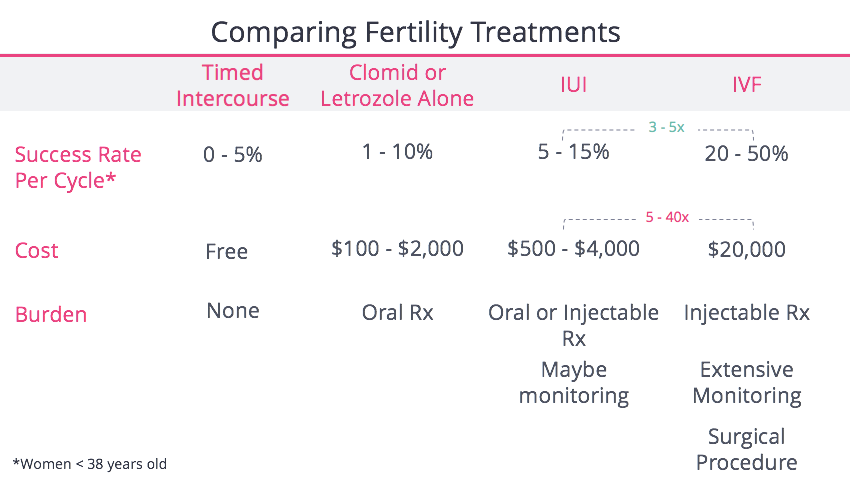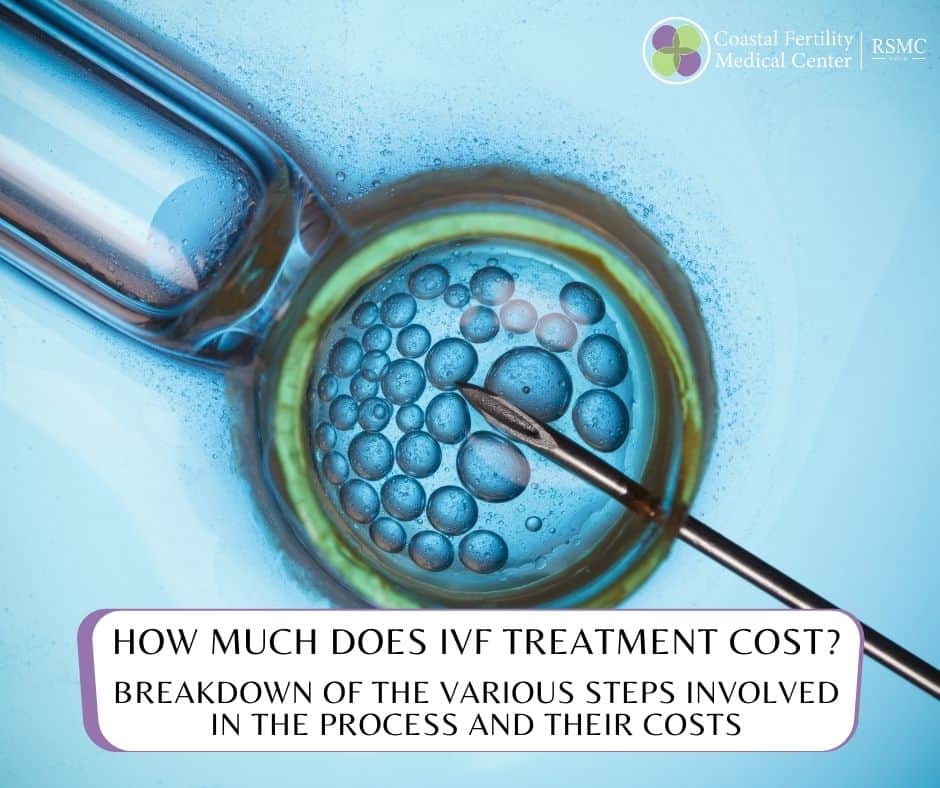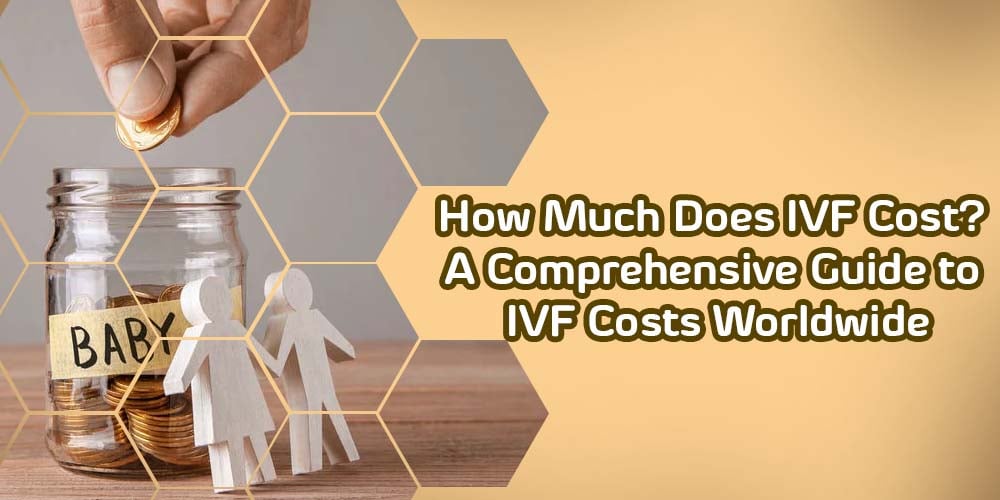
What Is IVF? Your Complete Guide to In Vitro Fertilization
April 11, 2025
How Does IVF Work? A Step-by-Step Guide to Your Fertility Journey
April 11, 2025How Much Is IVF with Insurance? Your Guide to Costs, Coverage, and Real-Life Options
In vitro fertilization (IVF) can feel like a rollercoaster—emotionally, physically, and financially. If you’re considering it, one of the first questions that pops up is: How much is this going to cost me, especially with insurance? You’re not alone in wondering. Millions of people across the U.S. are navigating infertility, and IVF often becomes the beacon of hope when other options fall short. But the price tag? It’s a big deal, and insurance can either be a lifeline or a confusing maze.
This guide is here to break it all down for you—plain and simple. We’ll dive into what IVF costs with insurance, what affects those numbers, and how you can make it work for your budget. Plus, we’ll uncover some fresh insights and practical tips you won’t find everywhere else, based on the latest trends and real-world experiences. Whether you’re just starting to explore IVF or you’re deep in the planning stage, let’s figure this out together.
What Does IVF Actually Cost?
IVF isn’t cheap. Without insurance, a single cycle—meaning one round of egg retrieval, fertilization, and embryo transfer—typically runs between $12,000 and $25,000. That’s a huge range, right? It depends on where you live, the clinic you choose, and what extras you need, like medications or special procedures. But here’s the kicker: most people don’t stop at one cycle. Studies show the average patient goes through two to three rounds before success, pushing the total cost closer to $50,000 or more.
So, what’s included in that price? A basic IVF cycle usually covers:
- Monitoring appointments (ultrasounds and blood tests)
- Egg retrieval (a quick surgery to collect eggs)
- Lab fees (where the magic happens—fertilizing eggs with sperm)
- Embryo transfer (placing the embryo in the uterus)
But then there are add-ons that can pile up:
- Medications: $3,000–$7,000 per cycle
- Genetic testing: $1,000–$5,000
- Frozen embryo storage: $500–$2,000 per year
Without insurance, it’s a lot to swallow. That’s why understanding what your insurance might cover is a game-changer.

How Insurance Changes the IVF Price Tag
Here’s the good news: insurance can lower your out-of-pocket costs for IVF. The bad news? It’s not a guarantee, and it varies wildly depending on your plan, your state, and even your employer. Let’s unpack this step by step.
Does Your Insurance Cover IVF?
In the U.S., insurance coverage for IVF isn’t universal. As of 2025, only 21 states have laws requiring some form of infertility treatment coverage, and just 15 of those include IVF specifically. These are called “mandate states,” and they’re a big deal if you live in one. States like California, New York, and Massachusetts, for example, have robust mandates that force insurance companies to cover at least part of IVF costs.
But even in mandate states, there are catches:
- Age limits: Coverage might stop at 45 or 50.
- Cycle limits: Some plans cap you at one or three cycles.
- Pre-approvals: You might need to prove other treatments failed first.
If you’re in a non-mandate state like Florida or Arizona, you’re often on your own unless your employer opts in. Big companies—like Google or Apple—sometimes offer IVF benefits to attract talent, covering $10,000 or more per cycle. Check your employee handbook or ask HR—it could save you thousands.
What’s Covered (and What’s Not)?
When insurance kicks in, it usually covers the core IVF process—monitoring, retrieval, and transfer. A 2024 study from the American Society for Reproductive Medicine found that in mandate states, insured patients paid an average of $5,000–$10,000 out of pocket per cycle, compared to the full $20,000+ without coverage. That’s a huge relief.
But here’s where it gets tricky:
- Medications: Often excluded or only partially covered. You might still shell out $2,000–$5,000.
- Extras: Things like genetic testing or donor eggs? Rarely covered.
- Deductibles and copays: Even with coverage, you’ll pay these first.
Take Sarah, a 34-year-old teacher from New Jersey (a mandate state). Her insurance covered 80% of her IVF cycle after a $2,000 deductible. She paid $6,000 total for her first round, including meds. Compare that to Mike in Texas (no mandate), who paid $18,000 upfront because his plan covered zilch. Location and policy make all the difference.
Breaking Down the Numbers: Real Costs with Insurance
Let’s get specific. Here’s a snapshot of what IVF might cost with different insurance scenarios, based on 2025 data and trends:
| Scenario | Total Cost per Cycle | Out-of-Pocket with Insurance |
|---|---|---|
| No coverage | $12,000–$25,000 | $12,000–$25,000 |
| Partial coverage (50%) | $12,000–$25,000 | $6,000–$12,500 |
| Full coverage (mandate state) | $12,000–$25,000 | $2,000–$10,000 |
| Employer benefit ($15,000) | $12,000–$25,000 | $0–$10,000 |
Note: These are averages. Your costs could be higher or lower depending on your clinic and needs.
Hidden Costs to Watch For
Insurance doesn’t always cover the full journey. Here are some expenses that sneak up on people:
- Travel: If the best clinic is hours away, gas or flights add up.
- Time off work: Egg retrieval and transfers mean missed days.
- Emotional support: Therapy or support groups (often $50–$150 per session) aren’t covered.
A 2024 Stanford study found that couples without coverage were 30% more likely to drop out of IVF due to financial stress. Insurance doesn’t just save money—it keeps hope alive.

What Affects Your IVF Costs with Insurance?
The price you pay isn’t random. Several factors tweak the numbers, and knowing them can help you plan.
Where You Live
City dwellers pay more. A cycle in New York City might hit $25,000, while rural Ohio could be $15,000. Why? Higher rent, staff salaries, and demand drive up clinic costs in urban areas. Insurance helps, but your copays and deductibles scale with the base price.
Your Insurance Plan
Private plans vary. HMOs might limit you to in-network clinics, while PPOs give more flexibility but higher premiums. Medicaid rarely covers IVF, though some states are testing pilot programs in 2025—stay tuned if you qualify.
Your Health Needs
If you need donor eggs ($20,000–$45,000) or a gestational carrier ($50,000–$200,000), insurance often steps back. These “extras” are seen as elective, even if they’re your only shot at a baby.
Clinic Choice
Fancy clinics with high success rates charge more. A top-tier spot like Boston IVF might cost $22,000 per cycle, while a smaller practice could be $14,000. Insurance might not care—they’ll cover the same amount either way.
How to Figure Out Your Coverage
Feeling overwhelmed? You don’t have to guess what’s covered. Here’s a step-by-step guide to get clarity:
- Call Your Insurance Provider
Ask: “Does my plan cover IVF? What’s the deductible, copay, and cycle limit?” Write it down—they love throwing jargon at you. - Check Your State Laws
Google “infertility insurance mandate [your state]” to see if you’re in a lucky spot. Sites like Resolve.org have handy maps. - Talk to Your Employer
Big companies might offer fertility benefits even in non-mandate states. HR can spill the beans. - Get a Clinic Quote
Clinics often break down costs with and without insurance. Ask for an itemized list. - Double-Check Exclusions
Look for fine print about meds, testing, or storage fees.
Pro tip: Record your calls (with permission) or take notes. Insurance reps can give conflicting info, and you’ll want proof later.
Interactive Quiz: What’s Your IVF Cost Range?
Let’s make this personal. Answer these quick questions to estimate your costs with insurance:
- Do you live in a mandate state? (Yes/No)
- Does your employer offer fertility benefits? (Yes/No)
- Will you need medications or extras like genetic testing? (Yes/No)
- Are you okay with a basic clinic, or do you want a top-tier one? (Basic/Top-tier)
Results:
- Mostly “Yes”: You’re looking at $2,000–$10,000 out of pocket.
- Mix of “Yes” and “No”: Probably $6,000–$15,000.
- Mostly “No”: Brace for $12,000–$25,000+.
This isn’t exact, but it’s a starting point. Tweak it with your real numbers later.

Fresh Insights: What’s New in 2025?
IVF costs and coverage are shifting. Here’s what’s hot right now, based on the latest buzz and research:
Federal Push for Access
In February 2025, the White House issued an executive order to expand IVF access, citing costs of $12,000–$25,000 per cycle as a barrier. It’s not law yet, but it’s nudging insurers and states to step up. Could this mean more coverage soon? Fingers crossed.
Rising Employer Benefits
A 2024 Mercer survey found 45% of large U.S. employers now offer IVF benefits, up from 30% in 2020. Tech and finance lead the pack, but even smaller firms are jumping in. If your job doesn’t offer it, it might be worth a negotiation.
Low-Cost IVF Options
Clinics are testing “mini-IVF” protocols with fewer drugs, dropping costs to $5,000–$10,000 per cycle. Success rates are lower (20–30% vs. 40–50%), but it’s a budget-friendly shot. Insurance might not cover it yet—ask your doc.
Three Big Questions You Haven’t Seen Answered Elsewhere
Most articles stop at costs and coverage basics. Let’s dig deeper into stuff that’s been overlooked.
1. How Does Insurance Affect Success Rates?
You’d think coverage just saves money, but it might boost your odds too. A 2024 Swedish study (applied to U.S. estimates) found that insured patients were 15% more likely to stick with IVF through multiple cycles. Why? Less financial stress means less dropout. In mandate states, live birth rates hit 35% per cycle for insured folks, vs. 25% for uninsured. Money matters, but so does peace of mind.
2. What’s the Emotional Cost of Insurance Gaps?
Everyone talks dollars, but what about your heart? A Stanford paper from 2024 showed uninsured IVF patients had 40% higher rates of anxiety and depression. Insurance gaps—like uncovered meds—force tough choices: “Do I skip this cycle or max out my credit card?” Clinics are starting to offer free counseling, but it’s rare. If your plan leaves you hanging, budget for mental health support too.
3. Can You Negotiate with Clinics?
Here’s a secret: some clinics cut deals. A 2025 FertilityIQ report found 1 in 5 patients haggled down their bill by 10–20% when insurance fell short. How? Offer cash upfront or bundle multiple cycles. Smaller clinics are more flexible than big chains. It’s not guaranteed, but it’s worth a shot.
Practical Tips to Slash Your IVF Costs
You’ve got the facts—now let’s get strategic. Here’s how to keep more money in your pocket:
✔️ Shop Around: Compare clinic prices. A $5,000 difference isn’t rare.
✔️ Ask About Discounts: Military, teacher, or multi-cycle deals can save 10–15%.
✔️ Use FSAs/HSAs: Pretax dollars from these accounts can cover copays or meds.
✔️ Look for Grants: Groups like BabyQuest offer $2,000–$15,000 for IVF.
✔️ Split Meds: Some clinics let you buy half-doses if you don’t need the full stash.
❌ Don’t Skip Research: Picking the cheapest clinic without checking success rates could cost you more cycles.
❌ Don’t Assume Coverage: Confirm every detail—assumptions lead to surprise bills.
Real Stories: IVF with Insurance in Action
Numbers are great, but people make it real. Meet two couples who’ve been there:
Emily & Jake, California
- Situation: Mandate state, employer coverage of $15,000.
- Cost: $4,000 out of pocket per cycle (meds and copays).
- Outcome: Baby boy after two rounds.
- Takeaway: “Our company benefit was a lifesaver. We’d have stopped at one cycle otherwise.”
Lisa & Tom, Georgia
- Situation: No mandate, no coverage.
- Cost: $20,000 per cycle, funded by loans.
- Outcome: Still trying after three rounds.
- Takeaway: “We’re drained—financially and emotionally. Insurance would’ve kept us going.”
Their stories show the gap between “covered” and “not.” Where do you fall?
Interactive Checklist: Are You Ready for IVF Costs?
Before you dive in, run through this:
- I’ve called my insurance to confirm coverage.
- I know my state’s mandate status.
- I’ve budgeted for meds and extras.
- I’ve researched at least three clinics.
- I’ve explored grants or discounts.
All checked? You’re set to tackle this with confidence.
The Bigger Picture: Why IVF Costs Matter
IVF isn’t just about money—it’s about dreams. A 2024 SIEPR study estimated that subsidized IVF could add 3.5% more first births among childless women aged 30–39. That’s 150,000+ babies who might not exist without help. But when insurance lags, it’s not just wallets that hurt—it’s families that never form.
On X, people are buzzing about this. Posts from 2025 show frustration: “IVF’s $15K–$40K? Insurance should cover it—why are we still debating?” Others cheer employer perks: “My company paid $20K for IVF. Best job ever.” The trend? Folks want access, and they’re loud about it.
Wrapping Up: Your Next Steps
So, how much is IVF with insurance? It could be $2,000 or $25,000—it’s all about your situation. But you’ve got power here. Dig into your plan, explore options, and don’t be afraid to ask for help. Clinics, employers, and even strangers online (hi, X!) are rooting for you.
Start today. Call your insurance, jot down questions, and dream big. IVF’s a journey, but with the right info, you’re not walking it blind. What’s your first move?


